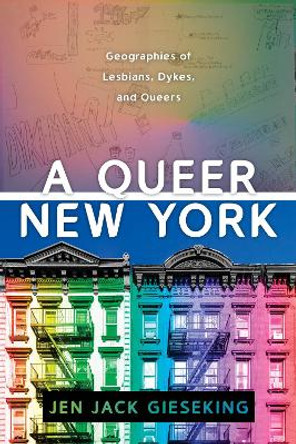Description
The People, Place, and Space Reader brings together the writings of scholars, designers, and activists from a variety of fields to make sense of the makings and meanings of the world we inhabit. They help us to understand the relationships between people and the environment at all scales, and to consider the active roles individuals, groups, and social structures play in creating the environments in which people live, work, and play. These readings highlight the ways in which space and place are produced through large- and small-scale social, political, and economic practices, and offer new ways to think about how people engage the environment in multiple and diverse ways.
Providing an essential resource for students of urban studies, geography, sociology and many other areas, this book brings together important but, till now, widely dispersed writings across many inter-related disciplines. Introductions from the editors precede each section; introducing the texts, demonstrating their significance, and outlining the key issues surrounding the topic. A companion website, PeoplePlaceSpace.org, extends the work even further by providing an on-going series of additional reading lists that cover issues ranging from food security to foreclosure, psychiatric spaces to the environments of predator animals.
About the Author
Jen Jack Gieseking is a cultural geographer and environmental psychologist and Postdoctoral Fellow in the Digital and Computational Studies Initiative at Bowdoin College.
William Mangold is a partner in a small design firm and Adjunct Professor in Interior Design at Pratt Institute.
Cindi Katz is Professor of Geography, Environmental Psychology, Women's Studies, and American Studies and Executive Officer of the Earth and Environmental Sciences Program at The Graduate Center of The City University of New York.
Setha Low is Professor of Environmental Psychology, Geography, Anthropoly, and Women's Studies, and Director of the Public Space Research Group at The Graduate Center of The City University of New York.
Susan Saegert is Professor of Environmental Psychology, founding director of the Center for the Study of Women and Society, and former director of the Center for Human Environments, all at The Graduate Center of The City University of New York.
Reviews
A smart and savvy collection that is genuinely interdisciplinary, The People, Place and Space Reader provides a new take on the foundations of the spatial turn across the contemporary humanities and social sciences while also giving them a much-needed shake: its selections and juxtapositions suggest new twists and turns of tremendous intellectual and practical import.
-- Derek Gregory, author of The Colonial Present: Afghanistan, Palestine, Iraq (Wiley 2004) and Spaces (Routledge 2008)
This anthology does extraordinary service in bringing together the most important- and often hard-to-find - readings dealing with how people respond to, interact in, and conceive of space and place. The book shows how many different disciplines have contributed to a social science of space, and how much our understanding of particular places has benefited from this interdisciplinary field. For anyone who wonders about the built environment around them, this book is invaluable.
-- Thomas Fisher, author of In the Scheme of Things: Alternative Thinking on the Practice of Architecture (2006) and Designing to Avoid Disaster: The Nature of Fracture-Critical Design (2012).
By drawing on classic work, some too long overlooked, as well as provocative recent writings in psychology, cultural geography and anthropology, design, and women's studies, the editors provide invaluable guideposts for a social science that is committed to egalitarian and democratic values.
-- Harry Heft, author of Ecological Psychology in Context: James Gibson, Roger Barker, and the Legacy of William James (Psychology 2005)
A timely and rich collection that crosses disciplines, spaces, and times. Combining classical pieces and more recent studies, this interdisciplinary reader offers fresh perspectives on important topics such as home, identity, publicness, power, and subjectivity. Contributions by anthropologists, geographers, historians, planners, psychologists, and sociologists offer productive and thoughtful engagements with multiple theories, methods, and topics. An outstanding reader that will be of great interests to scholars and students of space and place.
-- Farha Ghannam, author of Live and Die Like a Man: Gender Dynamics in Urban Egypt (Stanford 2013)
I have been waiting for years for a book like this to come along. Now I will no longer have to cobble together the most innovative work in critical geography and environmental psychology for my students -- they are all here together, in an affordable and accessible volume. The editors' commitments to radical critique, inclusion, and accessibility are carried all the way through. Here is a radical geography education for the rest of us.
-- Laura Barraclough, author of Making the San Fernando Valley: Rural Landscapes, Urban Development, and White Privilege (UGA 2011) and co-author of The People's Guide to Los Angeles (UCA 2012)
Book Information
ISBN 9780415664974
Author Jen Jack Gieseking
Format Paperback
Page Count 446
Imprint Routledge
Publisher Taylor & Francis Ltd
Weight(grams) 2100g








